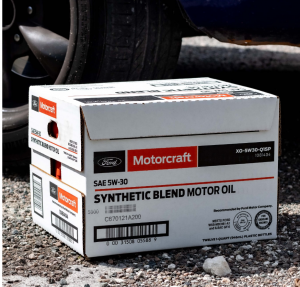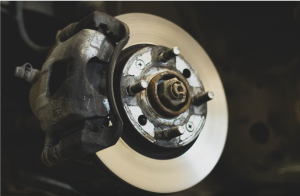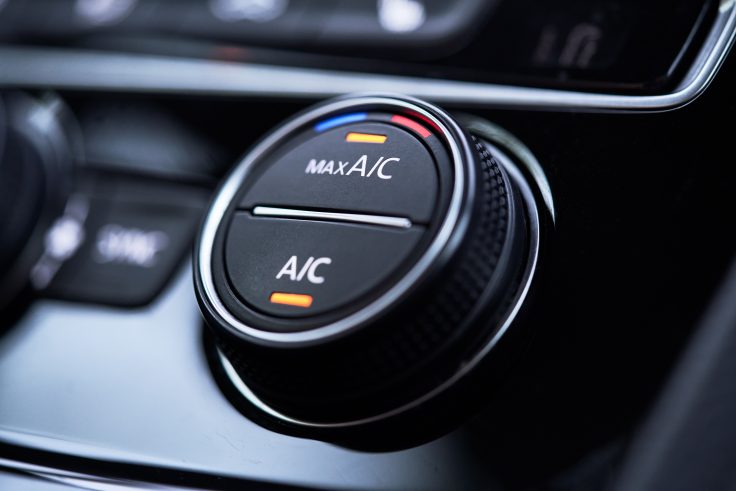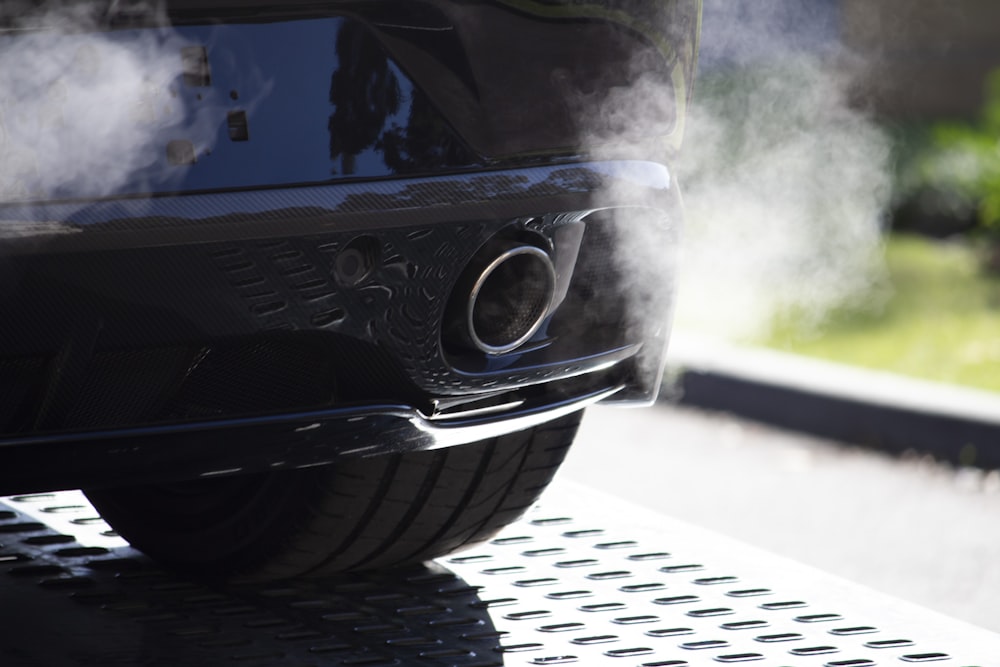What Is Defensive Driving and Why Is It Crucial for Road Safety?
What Is Defensive Driving and Why Is It Crucial for Road Safety?
Practicing defensive driving is not a sign of cowardice; rather, it is an act of safety and responsibility on the part of every driver.
In this post, we will check out the concept of defensive driving and explore why it’s crucial for road safety and vehicle maintenance.
What is Defensive Driving?
Defensive driving goes beyond being a set of skills; it’s a mindset that prioritizes safety and anticipates potential hazards on the road. It involves being aware of your surroundings, adapting to changing conditions, and taking proactive measures to avoid accidents. Defensive driving goes beyond simply obeying traffic laws – it’s about staying vigilant and prepared for the unexpected.
The Importance of Defensive Driving for Road Safety
Now, you might be wondering why defensive driving is so important. Well, let me break it down for you:
Accident Prevention
The main goal of defensive driving is to prevent accidents before they happen. Defensive drivers are better equipped to react quickly and avoid collisions when they stay alert and anticipate potential dangers.
Protection of Life and Property
Defensive driving isn’t just about protecting yourself but also your passengers and other road users. By practicing defensive driving techniques, you can limit the risk of injury and the extent of property damage in case an accident happens.
Reduced Maintenance Costs
Believe it or not, defensive driving can actually help you save money on vehicle maintenance in the long run. When you drive cautiously and avoid sudden stops or aggressive maneuvers, you can minimize wear and tear on your vehicle’s components, ultimately extending its lifespan and reducing repair costs.
Lower Insurance Premiums
Several insurance companies provide discounts to drivers who have completed defensive driving courses. Demonstrating your commitment to safe driving can help you qualify for lower premiums and save money on your car insurance.
Peace of Mind
Finally, practicing defensive driving can give you peace of mind, knowing you’re doing everything you can to stay safe on the road. By taking control of your driving habits and staying vigilant, you can feel more confident behind the wheel and enjoy a smoother, more stress-free driving experience.
How Can Dick’s Automotive Help?
At Dick’s Automotive, we’re committed to promoting road safety and helping our customers become better, safer drivers. Whether you’re in need of routine maintenance, repairs, or expert advice on defensive driving techniques, our team of skilled technicians is here to assist you every step of the way. Schedule an appointment with us today and experience the Dick’s Automotive difference for yourself!
Visit Our Website TO Make An Appointment
Defensive driving is not just a skill – it’s a mindset that can save lives and prevent accidents on the road. Staying alert, anticipating hazards, and practicing defensive driving techniques are simple ways to protect yourself, your passengers, and your vehicle from harm.
If you’re in need of automotive services or expert advice on defensive driving, don’t hesitate to visit the capable team of ASE-Certified mechanics and master mechanics at Dick’s Automotive in Clovis, CA, today. Please contact us today and please schedule an appointment via our website. Also, visit us on our Facebook page and get involved in our community!
10 Must-Have Car Accessories For California Drivers
10 Must-Have Car Accessories For California Drivers
In the beautiful state of California, driving is a go-to activity for most locals and tourists alike. From beach to mountain, enjoying time in your car is important. If you live near a major city in California, you know that traffic can be an issue as well. Here are 10 must-have car accessories that can be particularly useful for California drivers looking to make their drives more enjoyable.
1. Sunshade
Going to the beach all day? Nothing is worse than getting in the car after a long, hot beach day and feeling like you’re being cooked in an oven. Given California’s sunny weather, a sunshade for your car’s windshield helps keep the interior cool and protects against UV rays. Many convenient options are easy to store in your car, and they last a long time with great care.
2. Phone Mount:
Have you ever looked up directions to a new location only to have trouble getting there because you can’t see the directions? A reliable phone mount can help! By mounting your phone, you can ensure safe and hands-free navigation, which helps you stay connected without compromising safety. There are many phone mount models available, such as mounts that attach to your air vent or stick to your dashboard. Once you add a phone mount, returning to not using one is hard!
3. Car Organizer:
Treat your car like an extension of you. Trips are more enjoyable when you can focus on the road with minimal clutter around you. Keep your car clutter-free with a car organizer to store essentials like maps, snacks, water bottles, and other items you need on the go. It’s also great to know where everything you need is located in case you need quick access.
4. Emergency Kit:
Prepare for unexpected situations with an emergency kit containing essentials like first aid supplies, a flashlight, jumper cables, and basic tools. Whether you embark on long road trips or just run quick errands, you never know when you could need your emergency kit. Many convenient, compact options can sit in your trunk, ready to be accessed when needed.
5. Seat Covers:
Are you someone who likes to keep their possessions in neat condition? Is your car a high-traffic area for guests and children? Protect your car seats from wear and tear with durable and comfortable seat covers, which is especially important during extended drives. You’ll be thankful to have them when your kids spill or drop some food!
6. Bluetooth Car Kit:
If you love listening to music, audiobooks, or podcasts on your commute, consider upgrading your car’s audio system with a Bluetooth car kit for hands-free calling and wireless music streaming. Each car is different, but older models may not have Bluetooth. If this is the case for you, you can look into installing a new system in your vehicle so you can enjoy your music and calls hands-free and cord-free.
7. Dash Camera:
Nowadays, you can never be too careful when driving on the road—unfortunately, accidents to happen from time to time. Enhance safety and document your drives with a dash camera that can capture incidents, accidents, or scenic drives. It might save you by proving what happened on your drive!
8. Travel Mug or Cup Holder Adapter:
Are you someone who goes for long drives? Or maybe you are a drink aficionado and always have something different to satisfy your thirst. One of the best ways to stay hydrated on the road is with a travel mug, and consider a cup holder adapter to secure your drinks while driving.
9. Car Charger:
Keeping your devices alive may prove difficult if you are constantly on the go. Maximize your time driving by charging your devices with a reliable car charger, ensuring your phone and other gadgets are powered up during your journeys. This way, you can feel comfortable knowing you can access your phone if you are stranded or need help with directions!
10. GPS Navigation System:
While many use smartphones for navigation, a dedicated GPS navigation system can be a valuable addition, providing real-time directions without draining your phone battery. If you drive a lot for work, a GPS navigation system can come in handy and ensure you know where you are headed. There are many different models of GPS Navigation Systems available in various price ranges, so you can pick what is best for you.
Make An Appointment With Us Today!
If you drive a lot, many accessories can make driving in California more comfortable, organized, and safer for short and longer journeys. Many of these accessories can help you get help faster if you are in an emergency. Rest easy knowing your car can become a sanctuary by including some of these additions in your vehicle.
Don’t hesitate to visit the capable team of ASE-Certified mechanics and master mechanics at Dick’s Automotive in Clovis, CA, today. Please contact us today and please schedule an appointment via our website. Also, visit our Facebook page and get involved in our community!
What Is Transmission Fluid and Why Is It Important?

What Is Transmission Fluid and Why Is It Important?
One vital aspect of maintenance that often goes overlooked is the care of your transmission system. At Dick’s Automotive, we understand the essentiality of regular maintenance to keep your car running perfectly. In this blog, we’ll delve into the world of transmission fluid, exploring its role and significance and why staying on top of its maintenance is vital for the state of your vehicle.
Understanding Transmission Fluid
Transmission fluid is the soul of your vehicle’s transmission system, playing a pivotal role in ensuring smooth operation and longevity. It serves several critical functions, including lubrication, cooling, and maintaining hydraulic pressure within the transmission.
- Lubrication: Just like blood lubricates the human body’s internal components, transmission fluid lubricates the various parts inside the transmission. This helps reduce friction and wear, ensuring that gears and other components move seamlessly.
- Cooling: The transmission system generates heat while in operation, and excess heat can lead to premature wear and damage. Transmission fluid acts as a coolant, dissipating heat and preventing overheating, which is essential for optimal performance.
- Hydraulic Pressure: Many modern transmissions use hydraulic systems to engage gears. Transmission fluid is crucial in maintaining the hydraulic pressure necessary for smooth gear shifts. Without proper fluid levels, shifts can become harsh, leading to potential damage.
Why Transmission Fluid Matters
Now that we’ve understood the role of transmission fluid, let’s discuss why it’s so vital for your vehicle’s health.
- Prevents Wear and Tear: The lubricating properties of transmission fluid reduce friction between moving parts, extending the transmission’s lifespan and preventing premature wear.
- Ensures Smooth Shifting: Proper levels of transmission fluid are essential for smooth and precise gear shifts. Neglecting fluid changes can lead to rough shifting, slipping gears, or even transmission failure.
- Temperature Control: Transmission fluid helps regulate the temperature inside the transmission. Overheating can cause irreversible damage, making regular fluid checks and changes crucial.
- Prevents Costly Repairs: Regular maintenance, including transmission fluid changes, is far more cost-effective than dealing with major transmission repairs or replacements. It’s a small investment that pays off in the long run.
When to Check and Change Transmission Fluid
While the specifics can vary between vehicles, a general guideline is to check your transmission fluid at least once a month and change it as recommended in your owner’s manual. If you notice a burnt smell or discolored fluid, it’s a sign that a change is overdue. At Dick’s Automotive, we recommend a proactive approach to transmission maintenance, preventing potential issues before they become major headaches.
Make Your Appointment Today!
At Dick’s Automotive, our dedication to educating car owners goes hand in hand with our commitment to providing top-notch automotive services. Transmission fluid is a small yet crucial component that plays a big role in the overall health of your vehicle. Understanding its importance and proactively maintaining it can help to ensure a smoother and more reliable driving experience.
If you have questions about your transmission fluid or suspect an issue with your transmission, don’t hesitate to reach out to us. Don’t hesitate to visit the capable team of ASE-Certified mechanics and master mechanics at Dick’s Automotive in Clovis, CA, today. Please contact us today, and please schedule an appointment via our website. Also, visit our Facebook page and get involved in our community!
Expert Guide to Auto Repair and Oil Changes in Clovis, CA

Photo by Rinald Rolle On Unsplash
Expert Guide to Auto Repair and Oil Changes in Clovis, CA
When it comes to auto maintenance in Clovis, CA, oil changes are a fundamental task that can keep your vehicle running smoothly. While some car owners enjoy taking a DIY approach, it’s often a smart move to have experts like us at Dick’s Automotive handle your oil changes. We’ll discuss the benefits of professional service and the top signs your car needs an oil change before delving into the step-by-step guide.
Why Choose Professionals for Your Oil Change in Clovis?
Before you consider changing your car’s oil yourself, consider the advantages of having an experienced auto tech in Clovis, CA, like us, handle the job:
Expertise: Our technicians are well-versed in various car makes and models, ensuring the right oil type and quantity for your vehicle.
Time-Saving: We can complete the oil change quickly, saving you time and hassle.
Thorough Inspection: Our professionals inspect your vehicle for other issues, catching potential problems early.
Environmentally Friendly: We responsibly dispose of used oil, contributing to a cleaner environment.
Now that you understand the benefits of professional service let’s discuss the top signs your car might need an oil change.
Top Signs Your Car Needs an Oil Change
It may be time for an oil change if you notice any of the following:
- Dark and Dirty Oil: If you check your dipstick and the oil appears black and gritty, it’s time for an oil change. Fresh oil is a light amber color.
- Strange Engine Noises: Unusual engine sounds like knocking or rumbling may indicate that your engine lacks proper lubrication.
- Low Oil Level: If your oil level is consistently low, you may have a leak or excessive oil consumption, which requires attention.
- Excessive Exhaust Smoke: Thick, blue-gray exhaust smoke can be a sign of burning oil, signaling a problem with your engine.
If any of this is apparent in your vehicle, call us. We’d love to support your vehicle with our expert auto repair or oil change services. We perform Diagnostic Vehicle Inspections on each vehicle to keep you in the loop about things your vehicle may need. Now, if you’re dedicated to the DIY route, let’s dive into the step-by-step guide for changing your car’s oil.
Step-by-Step Guide: How to Change Your Car’s Oil Like a Pro
Ready to DIY your oil change? While we guide you through the basics below, it’s essential to consult your owner’s manual before beginning this process. We highly suggest watching YouTube videos and contacting experts before attempting independently. You can always ask the staff here at Dick’s Automotive for support or to just do it for you.
Step 1: Gather Your Tools and Materials
Before you start, ensure you have the following items on hand:
- New oil (as specified in your owner’s manual)
- Oil filter
- Oil filter wrench
- A wrench set
- Oil drain pan
- Funnel
- Oil filter drain pan
- Rags or paper towels
Step 2: Prepare Your Vehicle
Park your car on a level surface and let the engine cool down for a bit. It’s safer to work on a cool engine.
Step 3: Locate the Oil Drain Plug
Consult your owner’s manual to find the location of the oil drain plug. Once located, place the oil drain pan beneath it.
Step 4: Drain the Old Oil
Using a wrench, carefully loosen the oil drain plug. Make sure the oil drain pan is properly positioned to catch the old oil. Allow the oil to drain completely.
Step 5: Replace the Oil Filter
Use an oil filter wrench to remove the old oil filter. Before installing the new filter, lubricate the rubber gasket with a bit of fresh oil. Screw on the new filter hand-tight.
Step 6: Refill with Fresh Oil
Using a funnel, pour the recommended amount of new oil into the engine. Refer to your owner’s manual for the correct oil type and capacity.
Step 7: Check the Oil Level
Once you’ve filled the oil, use the dipstick to check the oil level. Add more if necessary to reach the proper level.
Step 8: Dispose of Old Oil Responsibly
Never dispose of used oil in the trash or down the drain. Most auto shops and recycling centers accept used oil for proper disposal.
Step 9: Conduct a Visual Inspection
Before wrapping up, inspect your vehicle for oil leaks or loose components. Tighten any loose parts, and clean up any spills.
That’s it! You’ve successfully changed your car’s oil. Remember to record the date and mileage to ensure you stay on your car’s maintenance schedule.
If You Don’t Have The Time, We Do!
If you ever feel unsure about this process, don’t hesitate to seek professional help at your local auto shop, such as Dick’s Automotive in Clovis, CA. We’re here to assist you with all your auto repair and oil change needs.
7 Warning Signs: Your Brakes Need Attention

Photo by Benjamin Brunner On Unsplash
7 Warning Signs: Your Brakes Need Attention
One critical aspect of car maintenance is brake care. Brake maintenance is a crucial part of vehicle care, and it falls under the umbrella of routine maintenance. At Dick’s Automotive, California, we understand the importance of keeping your vehicle in the best possible condition to ensure safety and longevity.
That’s why in this blog, we’ll walk you through seven warning signs that your brakes need attention. We’ll help you understand the importance of brake maintenance and how to recognize when it’s time to schedule an appointment with us.
1. Squealing or Screeching Noises
If you’ve noticed a high-pitched squealing or screeching noise when you apply the brakes, it’s time to pay attention. This is often the first sign that your brake pads are wearing down. Brake pads have a built-in indicator that makes this noise to alert you that it’s time for replacement. Ignoring this sound can lead to more expensive repairs down the road. Regular brake maintenance will help you avoid this.
2. Reduced Responsiveness
Are your brakes feeling less responsive than usual? When you press the brake pedal, it should feel firm and responsive. If you notice a spongy or soft pedal, or if it goes all the way to the floor, it’s a clear sign that something is wrong with your braking system. This can be caused by a failing master cylinder or moisture or air in the brake lines. Don’t wait; schedule an appointment with Dick’s Automotive for a brake inspection.
3. Vibrations or Shaking
When you apply the brakes, your car should come to a smooth stop. If you experience vibrations or shaking in the steering wheel or brake pedal when you brake, it may be due to warped brake rotors. Warped rotors can compromise your ability to stop safely. Regular brake maintenance, including rotor inspection, can help prevent this issue.
4. Dashboard Warning Light
Modern cars are equipped with a dashboard warning light system that can indicate various issues, including brake problems. If your brake warning light illuminates, it’s essential to have your brakes inspected promptly. While it could be a minor issue, ignoring it can lead to more significant problems that may endanger your safety on the road.
5. Pulling to One Side
If your car pulls to a side when you apply the brakes, it could be a sign of uneven brake pad wear or a brake fluid leak. This can result in an uneven distribution of braking force, which compromises your control over the vehicle. Brake maintenance can help prevent such issues and keep your vehicle safe and reliable.
6. Burning Smell
A burning smell when you apply the brakes is a clear indication of overheating. Overheated brakes can lead to brake fade, which significantly reduces your ability to stop your vehicle safely. If you notice this smell, it’s vital to have your brakes checked immediately. Proper brake maintenance can help prevent overheating issues.
7. Visible Brake Pad Wear
Finally, you can visually inspect your brake pads through the wheel spokes. If the pad thickness is less than a quarter of an inch, it’s time for replacement. Driving with excessively worn brake pads can damage your rotors, leading to more extensive and expensive repairs.
Visit Us At Dick’s Automotive in Clovis, CA!
At Dick’s Automotive, we have the expertise and experience to handle all your brake maintenance and repair needs. Our team of skilled technicians is committed to providing top-notch service to keep your vehicle in excellent condition.
If you’ve noticed any of these warning signs or simply want to ensure your brakes are in good shape, don’t hesitate to visit the capable team of ASE-Certified mechanics and master mechanics at Dick’s Automotive in Clovis, CA, today. Please contact us today, and please schedule an appointment via our website. Also, visit us on our Facebook page and get involved in our community!
5 Common Winter Car Care Mistakes To Avoid
Photo by Thomas Kelly On Unsplash
Winter in California might not have the classic hallmarks of bone-chilling temperatures, snowy roads, and ice-covered windshields. However, the onset of the cooler season, accompanied by the characteristic rain, brings about unique challenges for car owners. Regular maintenance becomes critical during this period to ensure your vehicle’s smooth running.
Here at Dick’s Automotive, we often encounter common mistakes people make regarding their car’s care during the Californian winter. We’ll delve into these today so you’re better prepared and well-informed.
1. Neglecting Tire Pressure
Even in California’s milder winter, temperatures can drop significantly during the night. This can lead to reduced tire pressure. Driving with under-inflated tires can wear them out faster and reduce fuel efficiency. Plus, with our occasional rainy days, properly inflated tires provide better traction on wet roads.
Tip: Regularly check your tire pressure and ensure it’s at the recommended level.
2. Not Checking Your Wipers
Rain is more frequent during the winter months in California. Worn-out or poor-quality wipers can hinder visibility, making it challenging and unsafe to drive in the rain.
Tip: It’s a good practice to replace wiper blades annually or as soon as you notice streaking on your windshield. Keeping your windshield washer reservoir filled with good-quality fluid can improve visibility during those rainy drives.
3. Ignoring Fluid Levels
Many car owners need to check and replace essential fluids during winter. Engine oil, brake fluid, and coolant must be optimal for your vehicle to function correctly. Cooler temperatures and fluctuating conditions can affect fluid viscosities and performance.
Tip: Make it a routine to check fluid levels monthly, and if you’re unsure about any discrepancies, don’t hesitate to schedule a maintenance check.
4. Avoiding a Battery Check
Did you know that cold temperatures can affect your car’s battery? Even in milder climates like California, a drop in temperature can influence battery performance. A weakened battery may result in hard starts or, in worst-case scenarios, not starting.
Tip: Have your battery tested at least once a year, preferably at the beginning of winter. If it’s nearing the end of its life, it’s better to replace it preemptively than be caught off guard.
5. Not Preparing for Emergencies
Even without snow or extreme cold, winter can still bring unforeseen circumstances. Maybe it’s an unexpected heavy downpour, or you encounter a blocked road due to a fallen tree. Being prepared can make all the difference.
Tip: Always have an emergency kit in your car. This should include essential tools, a flashlight, extra batteries, bottled water, non-perishable snacks, a first-aid kit, and blankets. Also, always ensure your phone is adequately charged before taking longer journeys.
Conclusion
Winter in California presents a different kind of challenge for vehicle owners. With rain replacing snow and subtle temperature shifts, it’s easy to fall into the trap of overlooking standard maintenance tasks. But as the saying goes, “Prevention is better than cure.” Regular upkeep can save you from unexpected and potentially expensive repairs.
At Dick’s Automotive in California, we pride ourselves on ensuring every vehicle that comes our way receives top-notch care. Our experienced team understands the challenges of maintaining cars during the Californian winter. Please visit us if you are unsure about any aspect of your vehicle’s care, need a maintenance check, or require any of the services mentioned above.
Don’t hesitate to visit the capable team of ASE-Certified mechanics and master mechanics at Dick’s Automotive in Clovis, CA, today. Please contact us today and please schedule an appointment via our website. Also, visit our Facebook page and get involved in our community!
Top 10 Unexpected Car Problems & How To Prevent Them

Photo by Grant Porter On Unsplash
Top 10 Unexpected Car Problems & How To Prevent Them
Unexpected car problems can throw a wrench into your plans and budget; hence, it is crucial to be aware of and prevent them as much as possible. At Dick’s Automotive, we have a deep passion for keeping your vehicles running smoothly and place a high value on empowering you with the knowledge that can save you time, money, and stress in the long run.
In this blog, we will shed light on some of the most common unexpected car problems and provide valuable insights on how to prevent them.
1. Overheating Engine
A car’s engine can overheat for various reasons, such as low coolant levels, a damaged radiator, or a malfunctioning thermostat. To prevent this, ensure regular coolant checks and flushes, maintain proper fluid levels, and never ignore warning signs like rising temperature gauges or steam escaping under the hood.
2. Dead Battery
Few things are as frustrating as a dead battery, especially in a hurry. Regularly inspect your battery for corrosion, check its voltage, and replace it as needed. Avoid leaving lights on or accessories plugged in when the engine is off.
3. Alternator Failure
The alternator is in charge of charging your battery and powering electrical systems. Signs of alternator trouble include dimming lights and warning lights on the dashboard. Regularly test your alternator’s output voltage and belt tension.
4. Transmission Issues
Your transmission is a key part of your vehicles functioning. Transmission problems can lead to costly repairs. Follow your manufacturer’s guidelines for transmission fluid changes and avoid aggressive driving habits that strain the transmission, such as letting your vehicle run hot, revving your engine, or accelerating wildly.
5. Brake System Troubles
Faulty brakes are a safety hazard! Regularly inspect brake pads, rotors, and fluid levels. This is one maintenance must you really can’t go without. If you hear grinding or experience pulsations when braking, don’t delay seeking professional help. Give us a visit at Dick’s Automotive in Clovis to get your brakes inspected if you’re worried!
6. Ignition System Problems
Faulty ignition components can leave you stranded. Ensure spark plugs, ignition coils, and wires are in good condition. Regular tune-ups can prevent unexpected ignition failures. This one can be expensive to fix, and makes using your vehicle nearly impossible. Keeping that maintenance scheduled regularly is going to be key here!
7. Leaking Fluids
Got a strange spot in your drive way? Leaking oil, coolant, or other fluids can indicate underlying issues. Regularly check your parking spot for drips and examine the engine bay for any signs of leaks.
8. Suspension & Steering Malfunctions
Worn-out shocks, struts, or steering components can cause a bumpy or shaky ride. These can be caused by off-roading, hitting curbs (we’ve all been there), or going to fast over speed bumps. Potholes also makes this a prevelant issue. Regularly inspect and replace these parts as recommended by your vehicle’s manufacturer, or give us a call at Dick’s Automotive to set up an appointment and make sure it’s all working as it should.
9. Air Conditioning Woes
A malfunctioning A/C system can make your drives uncomfortable. Run your A/C regularly, even in the cooler California months, to keep the system lubricated. If you notice reduced cooling, strange odors, or unusual noises, get it checked promptly. When it’s nice out, rolling the windows down is all good, but again, make sure you’re using your A/C every once in a while so mold doesn’t build up! Your A/C actually has an effect on your engine cooling, too, so it’s essential to have it in working conidtion!
10. Check Engine Light Mysteries
The dreaded check engine light can signal various issues, from minor to severe. Sometimes it means your gas cap has been left off, while it can sometimes mean your engine is on the fritz! It may be tempting as life goes on, but don’t ignore it! One way to take care of this at home and be prepared for it is to invest in a diagnostic scan to pinpoint the problem early, saving you from potential breakdowns and costly repairs. However, we’d suggest visiting a professional right away. You could also visit us at Dick’s Automotive in Clovis, CA for a Diagnostic Vehicle Inspection.
Conclusion
Proactive maintenance and regular inspections are the key to avoiding unexpected car problems. Understanding the top issues and their prevention strategies will make you better equipped to care for your vehicle and ensure its longevity. Our expert team is also here to support you on this journey, offering comprehensive maintenance services and reliable repairs when needed.
Come to the capable team of ASE-Certified mechanics and master mechanics at Dick’s Automotive in Clovis, CA, today. Please contact us today and please schedule an appointment via our website. Also, visit our Facebook page and get involved in our community!
Do You Have an Emissions Test Coming Up? Here’s What You Need to Know
Photo by Matt Boitor on Unsplash
Do You Have an Emissions Test Coming Up? Here’s What You Need to Know
If you’re a vehicle owner, you’re likely familiar with the concept of emissions testing. This crucial assessment ensures that vehicles meet the emissions standards set by regulatory bodies. At Dick’s Automotive in Clovis, California, we understand the importance of emissions testing and offer comprehensive testing services to help you stay compliant. In this blog, we’ll walk you through what emissions testing entails, why it’s necessary, how it’s done, and provide valuable tips to help you maintain a vehicle that passes the test every time.
What is an Emissions Test?
An emissions test is a procedure designed to measure the level of pollutants emitted by a vehicle’s exhaust system. It helps determine if a vehicle meets the emission standards set by environmental agencies and ensures that harmful pollutants, such as carbon monoxide and nitrogen oxide, are kept within acceptable limits. Regular emissions testing is vital for maintaining air quality and reducing the environmental impact of vehicles.
Why Do We Need Emissions Testing?
Emissions testing plays a crucial role in protecting the environment and public health. By ensuring vehicles comply with emission standards, we can reduce air pollution and minimize the adverse effects of vehicle emissions on our communities. Additionally, emissions testing helps identify potential issues with a vehicle’s engine or exhaust system, allowing for necessary repairs to be made promptly, thus improving overall vehicle performance and fuel efficiency.
How Is An Emissions Test Done?
During an emissions test, a certified technician will connect your vehicle to specialized equipment that measures its emissions. This typically involves attaching a probe to the exhaust system to collect samples while the engine runs at different speeds. The equipment analyzes the collected samples to determine the levels of pollutants the vehicle emits. The process is quick and straightforward, usually completed within 15 to 30 minutes.
Scheduling and Submitting Your Passing Test
To ensure compliance with local regulations, it’s essential to schedule your emissions test within the designated time frame. Check with your local authorities or the Department of Motor Vehicles (DMV) to determine the specific requirements and procedures for scheduling and submitting the test results. Some areas may have online systems or authorized testing centers where you can conveniently submit the test results. Be sure to record the test for future reference and potential vehicle sales.
Dick’s Automotive Emissions Testing Services
At Dick’s Automotive, we offer professional emissions testing services to help you fulfill your obligations and keep your vehicle running cleanly. Our certified technicians use state-of-the-art equipment to conduct accurate and reliable emissions tests. We understand the importance of prompt and hassle-free testing, and our friendly staff is here to guide you through the process, answer any questions, and ensure your seamless experience.
Tips to Keep Your Car in Shape for Emissions Testing
Regular Maintenance: Adhere to your vehicle’s recommended maintenance schedule, including routine oil changes, filter replacements, and spark plug checks. Regular maintenance helps keep your engine running efficiently and reduces the likelihood of emissions-related issues.
Drive Smart: Practice smooth driving habits, avoid excessive idling, and minimize rapid acceleration and braking. These habits promote better fuel efficiency and help reduce emissions.
Check the Check Engine Light: If your check engine light is on, promptly address the underlying issue. Ignoring it can lead to failed emissions tests. Bring your vehicle to Dick’s Automotive for comprehensive diagnostic and necessary repairs.
Use High-Quality Fuel: Opt for high-quality fuel from reputable gas stations. Quality fuel helps maintain engine performance and reduces the risk of fuel-related issues that could affect emissions.
Maintain Exhaust System: Regularly inspect your vehicle’s exhaust system for leaks, damage, or corrosion. A well-maintained exhaust system ensures proper emission control.
What to Do If Your Car Doesn’t Pass the Test
If your vehicle doesn’t pass the emissions test, don’t panic. It’s essential to address the underlying issue promptly. Bring your vehicle to Dick’s Automotive for a thorough inspection and necessary repairs. Our experienced technicians will diagnose the problem and provide the necessary solutions to help your vehicle meet the required emissions standards.
Dick’s Automotive Is Here For All Your Vehicle Needs
Emissions testing is a vital aspect of responsible vehicle ownership, ensuring that our cars operate in an environmentally friendly manner. At Dick’s Automotive in Clovis, we offer comprehensive emissions testing services to help you meet regulatory requirements. By following the provided tips and correctly maintaining your vehicle, you can easily increase the likelihood of passing the emissions test.
Don’t hesitate to visit the capable team of ASE-Certified mechanics and master mechanics at Dick’s Automotive in Clovis, CA, today. Please contact us today and please schedule an appointment via our website. Also, visit us on our Facebook page and get involved in our community!
Back To School Tips For New Drivers
As summer draws to a close and the school year approaches, it’s an exciting time for new drivers who will be hitting the road to get to their classes. Whether you’re a high school student or a college freshman, it’s important to prioritize safety and be prepared for the challenges of driving in a school environment. To help you navigate this transition smoothly, here are some valuable back-to-school tips for new drivers:
1. Familiarize Yourself with School Zones and Speed Limits
School zones have reduced speed limits during certain hours to ensure the safety of students. Take the time to familiarize yourself with the locations of school zones in your area and the specific speed limits that apply. Slow down and adhere to these speed limits, especially during arrival and dismissal times, to avoid any potential accidents and ensure the safety of pedestrians.
2. Leave Early and Plan Your Route
Give yourself ample time to reach your destination. Leaving early allows you to avoid rushing and reduces the temptation to speed or engage in risky behaviors. Plan your route ahead of time, considering any potential congestion or road closures due to school activities. Use navigation apps or GPS devices to stay informed about traffic conditions and find alternative routes.
3. Minimize Distractions
Distracted driving is a significant safety concern for drivers of all ages. Keep your focus on the road by minimizing distractions inside your vehicle. Avoid using your phone, eating, or engaging in other activities that distract your attention from driving. If you need to use your phone, pull over to a safe location before doing so. Remember, the safety of yourself, your passengers, and others on the road should always be your top priority.
4. Watch Out for School Buses and Pedestrians
School buses are a common sight during the school year. Be mindful of their frequent stops and the flashing lights indicating that students are getting on or off the bus. Passing a school bus with its stop sign extended is illegal. Exercise caution and be prepared to stop when you see a school bus.
Additionally, be vigilant for pedestrians, especially children, who may be crossing the road or walking near schools. Be patient and yield to pedestrians at crosswalks, and always be aware of your surroundings.
5. Observe Parking Regulations
When parking near schools or on campus, adhere to all parking regulations. Illegally parked vehicles can cause congestion and inconvenience for other drivers. Follow designated parking areas, display any required permits, and respect the rights of other drivers and pedestrians.
6. Maintain Your Vehicle
Regular vehicle maintenance is crucial for safe and efficient driving. Ensure that your tires are properly inflated, lights are functional, and brakes are in good condition. Schedule regular oil changes and inspections to keep your vehicle running smoothly. Taking care of your vehicle reduces the risk of unexpected breakdowns and helps ensure your safety on the road.
7. Practice Defensive Driving
Practicing defensive driving techniques can significantly reduce the chances of accidents. Be aware of other drivers’ behaviors and anticipate their actions. Keep a safe following distance, signal your intentions, and be prepared to react to sudden changes in traffic. Stay calm and avoid aggressive maneuvers that can escalate situations.
Conclusion
As a new driver heading back to school, it’s essential to prioritize safety, be mindful of school zones, minimize distractions, and watch out for buses and pedestrians. By following these tips and being cautious, you can start the school year confidently and enjoy a safe driving experience. Remember, responsible driving protects yourself and contributes to the well-being of your fellow students and community. Good luck with your studies, and have a great academic year!
Don’t hesitate to visit the capable team of ASE-Certified mechanics and master mechanics at Dick’s Automotive in Clovis, CA, today. Please contact us today and please schedule an appointment via our website. Also, visit us on our Facebook page and get involved in our community!
How To Properly Maintain Your Vehicle As A New Driver
As a new driver, it is important to not only learn how to operate your vehicle safely but also to properly maintain it to ensure its longevity and safety on the road. In this article, we will discuss the essential maintenance tasks that every new driver should know.
Regular Maintenance Tasks
Regular maintenance tasks are essential to keep your vehicle running smoothly and safely. Here are some of the essential tasks that you should perform regularly:
Check the Oil
Checking the oil level and quality is essential to keep your engine running smoothly. Your vehicle owner’s manual will specify how often to check the oil and what type of oil to use. Make sure to check the oil level regularly and change it according to the manufacturer’s recommendations.
Check the Tires
Regularly checking the tire pressure and tread depth is essential to maintain good traction and prevent accidents. Your vehicle owner’s manual will specify the recommended tire pressure and tread depth. Make sure to check the tires regularly and replace them if the tread depth is below the recommended level.
Check the Brakes
The brakes are an essential safety feature of your vehicle. Make sure to have them checked regularly by a professional mechanic. Signs of brake problems include squeaking or grinding noises, a soft or spongy brake pedal, or the vehicle pulling to one side when braking.
Check the Battery
Your vehicle’s battery provides power to the engine and electrical components. Make sure to check the battery regularly and replace it if it is old or weak. Signs of a weak battery include slow cranking when starting the engine or dimming headlights.
Preventative Maintenance Tasks
Preventative maintenance tasks are essential to prevent major problems and extend the life of your vehicle. Here are some of the essential preventative maintenance tasks that you should perform regularly:
Change the Air Filter
The air filter prevents dirt and debris from entering the engine. Make sure to replace the air filter according to the manufacturer’s recommendations.
Flush the Cooling System
The cooling system prevents the engine from overheating. Over time, the coolant can become contaminated or lose its effectiveness. Make sure to flush the cooling system according to the manufacturer’s recommendations.
Replace the Timing Belt
The timing belt keeps the engine’s moving parts in sync. If the timing belt fails, it can cause serious engine damage. Make sure to replace the timing belt according to the manufacturer’s recommendations.
Replace the Spark Plugs
The spark plugs ignite the fuel in the engine. Over time, they can become worn or dirty, leading to poor performance or reduced fuel efficiency. Make sure to replace the spark plugs according to the manufacturer’s recommendations.
Conclusion
Properly maintaining your vehicle is essential to ensure its longevity and safety on the road. As a new driver, it is important to learn the regular and preventative maintenance tasks that your vehicle requires. By following the manufacturer’s recommendations and having your vehicle serviced regularly by a professional mechanic, you can keep your vehicle running smoothly and safely for years to come.
Come to the capable team of ASE-Certified mechanics and master mechanics at Dick’s Automotive in Clovis, CA, today. Please contact us today and please schedule an appointment via our website. Also, visit us on our Facebook page and get involved in our community!







